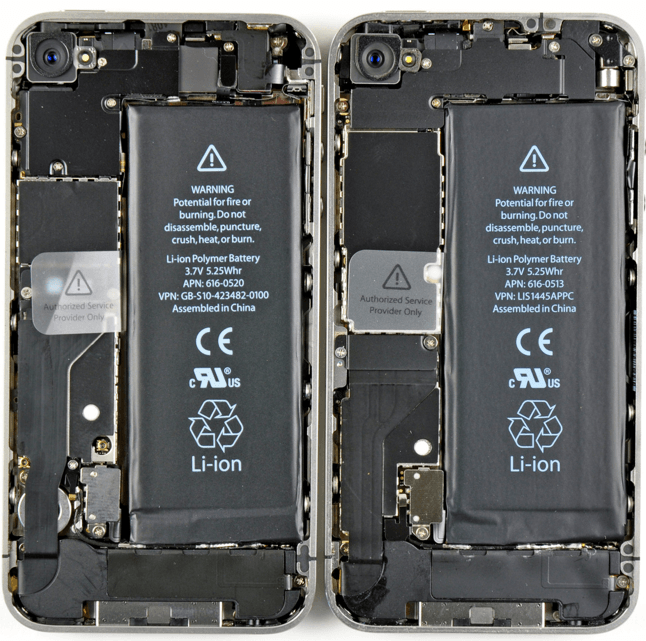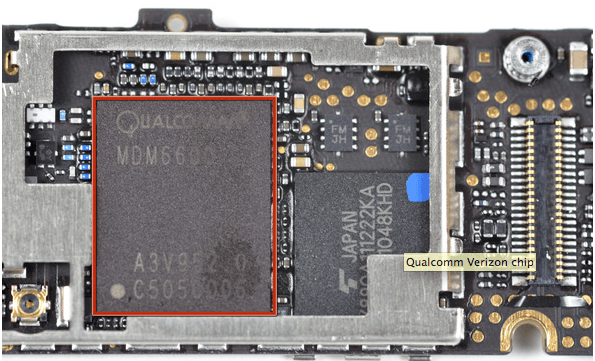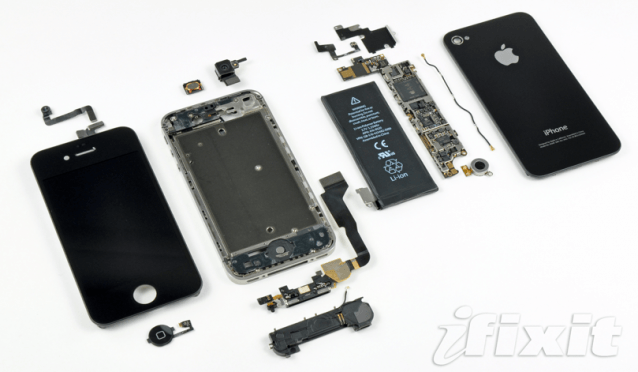Apple’s latest iPhone 4 launched especially for use on Verizon’s CDMA network has already been given the teardown treatment by our friends over at iFixit, and their findings have revealed that the revised device packs a redesigned vibrator, and changes to the location and design of RF components. However, the most surprising discovery is the Qualcomm MDM6600 chip, which is dual-mode GSM and CDMA compatible.
The use of this particular chip, which also features in the Motorola Droid Pro, signifies that the iPhone 5 will surely be dual-mode, allowing Apple to ship one handset for both Verizon and AT&T, as well as every other carrier in every other country.
The full iFixit teardown of the Verizon iPhone 4 is certainly worth a read, buy you can check out our highlights from the teardown after the break!
- On the back, Apple’s removed the visual warning to not throw your iPhone 4 in the trash. (Now that it’s on Verizon, you’ll be able to hear your calls, so you won’t need to do this).
- Apple’s updated the model number (from A1322 to A1349), but there’s not much externally to let us know we’re dealing with a Verizon iPhone. Is this the first Verizon phone without “Verizon” emblazoned on it?
- There are a few external differences, reflecting the different antenna design of the new CDMA iPhone.
- The SIM slot is gone. According to Apple, the SIM card and SIM tray were the only user-servicable parts in the iPhone 4. Apple now says “iPhone does not contain any user-servicable parts.”
- As expected, the iPhone came with tiny Pentalobe screws.
- At a quick glance, things don’t look too different when you take the back off of both iPhone 4 devices. But they’re not identical. If you can’t tell, the Verizon iPhone is on the left.

- The back covers are very similar, but are not interchangeable.
- Curious which phone you should take with you on your epic around the world journey? Wikipedia lists just 58 CDMA carriers in about 40 countries, and almost 300 GSM/UTMS carriers. If you only have room for one phone, stick with the GSM version.
- Once you’re inside, the battery is very easy to replace. The battery is listed as the same 5.25 watt-hour capacity, but does have a new model number (616-0520). The new battery also weighs less, it’s shrunk from 26.9 grams to 25.6 grams.
- This Wi-Fi antenna is perhaps the only RF component of the phone that did not receive a revamp. This antenna is nearly identical to the GSM iPhone 4.
- Like the Apple TV, there is an interesting set of unused solder pads near the edge of the logic board. These are likely used for testing during development.
- The Qualcomm PM8028 chip works in conjunction the Qualcomm MDM6600 to provide wireless data connection to the phone.
- The Qualcomm MDM6600 chip supports HSPA+ data rates of up to 14.4 Mbps and CDMA2000® 1xEV-DO Rev. A/Rev. B.

- This is the same chipset as the Droid Pro world phone. It supports both GSM and CDMA—which means that Apple could have supported GSM! Why didn’t they? It may be that it was easier to design antennas for a CDMA-only phone-this phone supports two cellular frequency bands, while Apple supports five bands in the GSM version.
- The iPhone 4’s vibrator received a complete makeover. iFixit tests show that the vibrator has quieter, softer feel, and makes a better sound when on a table.
Teardown & images courtesy of iFixit.


